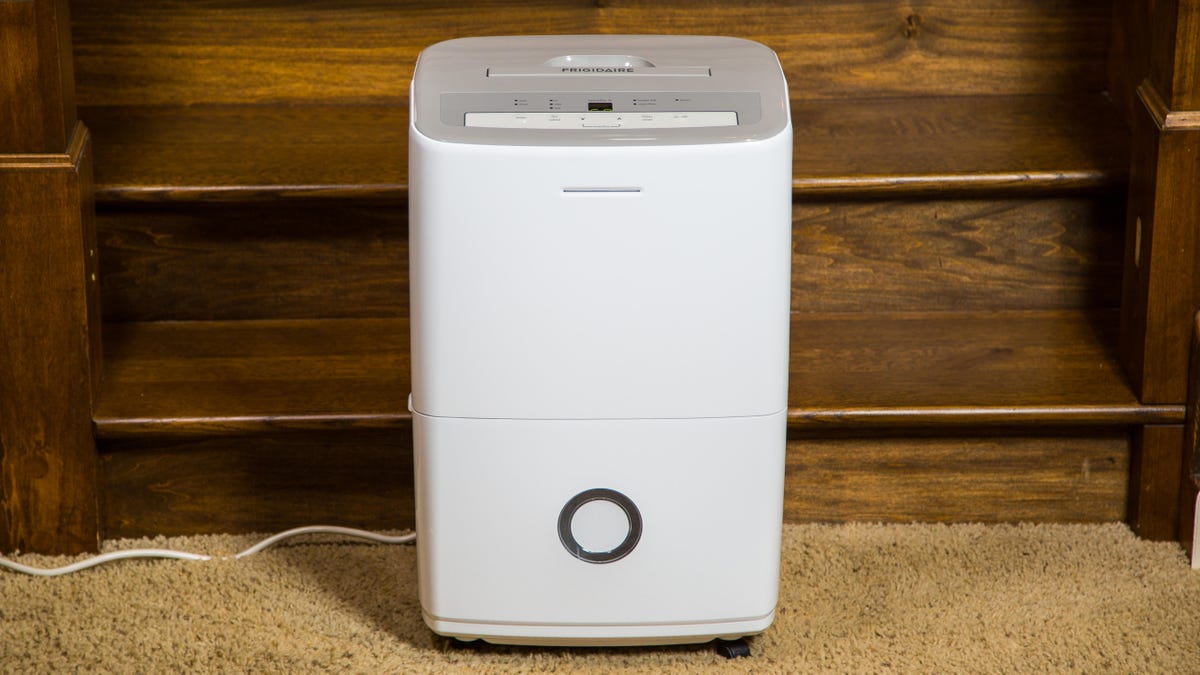Here's How to Install a Portable Dehumidifier in 4 Simple Steps
From choosing the best location to ensuring proper drainage, here's how to install a plug-in dehumidifier.

Where you place your dehumidifier makes a difference.
The way you install your dehumidifier will impact how effective it actually is. Location, drainage and proper maintenance are all factors to consider when setting up your new machine. Set up properly, your dehumidifier will wick away moisture from the air and prevent costly repairs.
Whether you already own a dehumidifier that doesn't seem to be working, or you'd like to scope out this installation process, this guide is for you.
1. Choose the right type and location
The most common type of dehumidifiers are the portable kinds, which are affordable and compact. The benefit of a portable dehumidifier is that it can easily be moved around, a big boon for large homes or temporary dehumidifying needs. The downside? They have limited operational ranges and can typically only handle a medium-size room (approximately 250 square feet).
If you purchased a portable dehumidifier, make sure the room it's in is no larger than what the machine can support. Then, place it in the room that needs it most. Basements are often susceptible to dampness; other trouble areas include steamy bathrooms and kitchens with poor ventilation.
Consider how noisy your dehumidifier may be, too. Since dehumidifiers use fans to circulate air, think twice before placing one in an area where noise might be a nuisance. Living rooms, hallways and bedrooms usually remain dehumidifier-free.
If you're experiencing humid conditions throughout your entire house, a portable unit probably won't be enough. That's especially true if you depend on a central air (HVAC) system for home climate control. A better solution in this scenario is to buy a whole-home dehumidifier. These units integrate directly into your existing HVAC systems and are powerful enough to handle houses thousands of square feet in size. However, they require professional installation and are expensive ($1,000 or more).
Connect a drain tube so the dehumidifier can pump out the water it collects.
2. Select your drainage method
Dehumidifiers work by condensing moisture from humid air. They then collect this water in an internal drip tray or tank. Some models also have a motorized pump to actively drain tank water automatically. It's a convenient feature and beats manually emptying the drip tray. The big drawback, though, is that the dehumidifier will need to be placed near a sink or drain.
Have your dehumidifier either drain into a pipe or directly into a sink.
If you do choose a model with a motorized pump, connect a water hose to the dehumidifier's drain pump hole. Then, place the other end of the provided drain hose inside a sink, drain or drainage pipe. Always use the water hose or tube that came with your appliance, as its length will match the rated pumping distance of your machine.
Choose your target value for ambient, relative humidity. Between 35 and 50 percent is the ideal range.
3. Set your preferred ambient humidity level
Next, it's time to plug in your dehumidifier. When choosing a desired humidity level, aim for a number between 35 and 50 percent (relative humidity), which is the optimal indoor humidity range. Now your machine will work to keep moisture levels close to this value.
Regular cleaning is key for dehumidifiers to function their best.
4. Regular maintenance
After installation, don't forget to perform regular maintenance on your dehumidifier. Cleaning the appliance frequently will help it to function properly. It will also guard against germ and mold growth. For a closer look at how to keep your dehumidifier clean, watch this video:
These steps provide a general guideline to installing any portable dehumidifier in your home. Check out your model's use and care manual if you have specific questions. And if you're still trying to decide what portable dehumidifier is right for you, start with our buying guide.

